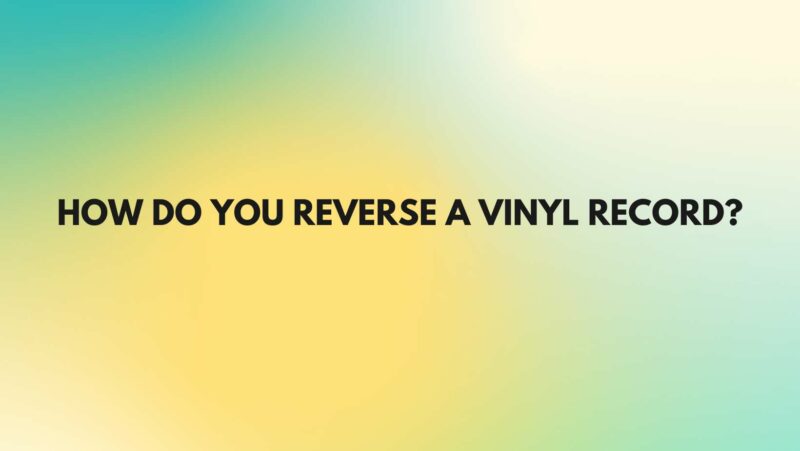Vinyl records, cherished for their analog warmth and distinctive sound, are typically played in the standard forward direction, with the stylus tracing the grooves from the outer edge to the center. However, there may be instances when you want to reverse a vinyl record, either for creative experimentation or to explore hidden messages, as was the case with certain songs during the vinyl era. In this comprehensive guide, we will explore how to reverse a vinyl record, the equipment needed, and the potential effects on playback.
Section 1: Understanding Reverse Playback
Reverse playback of a vinyl record involves playing the record in the opposite direction, with the stylus tracking the grooves from the center to the outer edge. This can create a unique and often unconventional listening experience, altering the order of the recorded sounds and potentially affecting pitch and speed.
Section 2: Equipment and Tools
To reverse a vinyl record, you will need the following equipment and tools:
- Turntable: A quality turntable in good working condition is essential. Ensure that it has a manual mode or pitch control to allow for reverse playback.
- Stylus: A high-quality stylus (needle) in good condition is crucial for accurate tracking during reverse playback.
- Vinyl Record: Choose a vinyl record that you’d like to play in reverse. Be aware that playing records backward can cause increased wear and may affect sound quality.
- Dust and Static Control: Properly clean and maintain your record to minimize dust and static, which can interfere with playback.
Section 3: Steps to Reverse a Vinyl Record
Follow these steps to reverse a vinyl record:
- Prepare Your Record: Ensure that your vinyl record is clean and free from dust and debris. Use a carbon fiber brush or a record cleaning solution to clean it if necessary.
- Turntable Setup: Set up your turntable in manual mode if available. Make sure the pitch control is set to zero (neutral) to avoid altering the pitch during playback.
- Stylus Alignment: Ensure that your stylus is correctly aligned to avoid excessive wear on the grooves during reverse playback.
- Start Playback: Gently place the stylus at the center of the vinyl record, where the last track’s lead-out groove ends.
- Manually Rotate the Platter: Slowly rotate the platter in the opposite direction of normal playback, i.e., from the center to the outer edge. This may require some practice to achieve consistent playback.
- Monitor Playback: As the stylus tracks the grooves in reverse, monitor the audio output. You may notice the music playing backward, with changes in pitch and speed.
- Use Pitch Control (if available): Some turntables offer pitch control, which allows you to adjust the playback speed during reverse playback. Experiment with this feature to achieve your desired sound.
Section 4: Effects of Reverse Playback
Playing a vinyl record in reverse can have several effects:
- Backward Audio Playback: The audio on the record will play in reverse, reversing the order of the sounds.
- Pitch and Speed Variations: Playback speed and pitch may fluctuate due to the turntable’s mechanics not being optimized for reverse playback.
- Sound Quality: Playback quality may differ from standard forward playback, potentially leading to changes in sound quality.
Section 5: Precautions and Considerations
It’s important to be cautious when reversing vinyl records:
- Wear and Tear: Reverse playback can increase wear on both the stylus and the grooves of the record. Use this technique sparingly to preserve your vinyl.
- Pitch Control: If your turntable has pitch control, be mindful of adjustments to avoid excessive speed variations.
- Enjoyment: Reverse playback is mainly used for experimental or creative purposes. Understand that the resulting sound may not always be musically pleasing.
Section 6: Conclusion
Reversing a vinyl record can be a fun and experimental way to explore sound, experiment with creativity, or investigate hidden messages in music. However, it’s important to approach this practice with care and understand its potential impact on your records and equipment. With the right setup and precautions, you can enjoy the unique experience of reverse playback while preserving the integrity of your vinyl collection.

